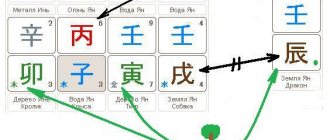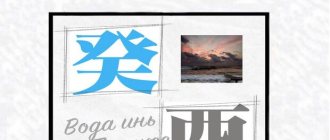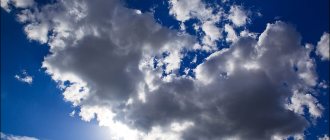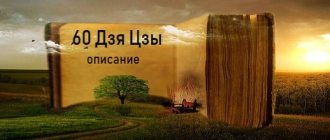Basics of BaZi.
22 Oct
Home › Metaphysics, Astrology, Jyotish, Ba-Tzu › Basics of Ba-Tzu.
- Maria Amarena
- 0
- no comments
The literal translation of Ba Zi八字 is “Eight 八 Characters 字.” In the West, BaZi is often called the “Four Pillars of Destiny.” Because these eight characters are divided into four pairs, BaZi is sometimes called Si Zhu 四柱 or Four Pillars.
BaZi translates our birth date—the year, month, day, and hour of birth—into four pairs of specific Chinese characters called Jia Zi 甲子. Each such pair is called a pillar. And the Eight Symbols are BaZi.
BaZi consists of five elements (Wood, Fire, Earth, Metal, Water) in Yin and Yang versions. By analyzing the structure of BaZi personality, we can determine, with considerable accuracy and detail, a person’s character, nature and life path. By deciphering BaZi , we can reveal his or her destiny code.
By understanding his or her inherent characteristics, predispositions, and energy patterns, an individual can increase his or her work performance, strengthen relationships with others, overcome weaknesses and shortcomings, maximize talents and potential, and make informed decisions based on predictions of his or her upcoming cycle of luck.
The BaZi card is a code that, when deciphered, tells about the strength and weakness of various elements at the moment of a person’s birth. Since each of the elements represents a certain aspect of a person's life (for example, wealth, career, relationships), then by considering a person's individual combination of elements, a BaZi practitioner is able to figure out the potential, events and consequences in a person's life.
BaZi Map
The BaZi map consists of four pillars. Each of them consists of two symbols. The top symbol is called the Heavenly Trunk (Tian Gan 天干), the bottom is the Earthly Branch (Di Zhi 地支). To make it easier for you to remember, focus on the fact that above is the Heavenly, and below it is the Earthly.
View of the BaZi card.
What are we looking for in a map? As in the practice of Feng Shui , the BaZi chart must have a balance of elements, and Qi, the universal energy, must flow calmly and unhindered in the chart. In a good map we will see a harmonious combination of elements, while their imbalance will lead to problems in a person’s life. To understand the map you will need to learn 22 Chinese characters. This is not so much - there are 26 letters in the Latin alphabet, and 33 in the Russian alphabet.
BaZi Language: Heavenly Trunks 天干
Heavenly Stems are also known as dominant or surface Qi. In the context of BaZi, the Heavenly Trunks give an idea of the perception of a person from the outside - what a person shows in his character, appearance, and personality traits. This is something everyone can see.
The top row of symbols is called Heavenly Trunks.
For example, if someone’s element of wealth appears only in the Heavenly Trunks, this means that the person likes that others know that he is rich, he will most likely demonstrably demonstrate the presence of money (but does he have it? actually, that's a different question!).
Example of Wealth ONLY in the Heavenly Stem.
For comparison, a person whose element of the element of Wealth is manifested only in the Earthly Branch will not show off his wealth; he can, for example, drive a simple, used car, live modestly and not be known among others as a wealthy person.
An example of a card with Wealth ONLY in the Earthly Branch. Writing hieroglyphs denoting Heavenly Trunks and their pronunciation (there are options for Yang - Ren water and Yin - Kwei water).
Heavenly Trunks are the five elements in Yin and Yang polarities. And it would be a mistake to think that Yin is a weakness and Yang is the strength of the card element. This is a way of expression, manifestation of the elements in the world. Try to refrain from assessing the strength of the element for now - it is built on the basis of other principles.
Getting to know the Heavenly Trunks
While you are just getting acquainted with BaZi, try to simply remember the image without delving into the description.
甲Yang Jia Tree
The Yang Jia tree is an image of a tall tree with a thick and straight trunk. These trees are hard and unyielding.
乙 Yin Yi Tree
The Yin Yi tree is an image of a small plant, bush, grass, leaves, flowers, climbing and weaving. The yin tree, unlike the yang tree, is very flexible; it can change, adapting to circumstances.
丙 Fire Yang Bing
The Yang Bing fire is the image of the sun that shines on everyone. It is bright, warm and life-giving. Bringing light and brightness to this world.
丁 Fire Yin Ding
Yin Ding fire is an image of a candle that is visible only at night.
戊 Land of Yang Wu
The land of Yang Wu (戊) is an image of a mountain, a rock, large stones. It is solid, hard, heavy and immobile.
己 Earth Yin Ji
Yin Ji Earth is an image of fertile land, a young fruit-bearing garden, it provides shade for rest and fruits for food. It is also sand or soft, porous earth.
庚 Metal Yang Geng
Metal Yang Gen is an image of raw metal, a weapon made of metal or a tank. It is hard, strong, tough and unfinished.
辛 Metal Yin Xin
Yin Xin metal is an image of a precious metal, like a thin wire of gold or silver, jewelry in the form of a ring or necklace. You can make anything out of it, and everything will be beautiful. It's sparkling, shiny and charming.
壬 Water Yang Ren (Ren)
Yang Ren (Ren) water is an image of an ocean, lake or powerful river stream.
癸 Water Yin Gui (Kwei)
Yin Gui water is the image of a dewdrop, droplet, fog, snowflake or rain.
You can learn more about the ten Heavenly Trunks here.
12 Earthly Branches
When it comes to the Earthly Branches , try to forget what you have read in Chinese horoscopes, which claim that dragons are ambitious and fierce, dogs are loyal, and snakes are crafty and cunning.
Writing the hieroglyphs of the Earthly Branches and pronunciation.
All these stereotypes are not only unacceptable, they are wrong! Animals as symbols are used to facilitate our understanding of Qi, energy, of each of the Earthly Branches. During the development of the BaZi system, it was very difficult to explain the essence of the Earthly Branches to the average person, and there was no choice but to use images of animals from the surrounding reality.
Moreover, those who know Chinese or Mandarin know that the Chinese characters and their pronunciation used to denote the Earthly Branches are not the characters used to denote animals. For example, a rat in Chinese is Shu 鼠, and in the earthly Branches a rat is Zi 子.
It is best to think of the Earthly Branches as another option for presenting Yin and Yang variations of the five elements.
You can read more about Earthly Branches here.
Trunks or branches?
Now, knowing about Heavenly Trunks and Earthly Branches, you may wonder: which is better or stronger - the Branch or the Trunk?
Let's think practically. Imagine that the Pillar is a tree with roots going deep and leaves stretching upward. Like an iceberg, a tree may be small on the surface, but its roots, most often, go deep into the earth and penetrate its thickness in all directions for many meters.
The Earthly Branches are like the roots of a tree - they are the basis of the Pillar. This is its base, the foundation that carries the main Qi, just as the roots support and nourish a tree. Heavenly Trunks, on the other hand, show Qi on the surface, which is usually much weaker, although more obvious.
Therefore they say that “one in the Branch is stronger than three in the Trunks.”
Find Mr. Day
In BaZi, the Heavenly Trunk of the Day Pillar is the element of personality, also called the Lord of the Day. It is key to understanding and analyzing your BaZi. In other words, without identifying the Lord of the Day, it is impossible to read a person’s BaZi. And an experienced BaZi master can tell a lot about a person just by looking at his Lord of the Day.
For example, in the chart above, the Lord of the Day is Ren 壬, yang water. Thus, this is Ren Water's personality card.
To be continued.
Selective translation of the book “BaZi - The Destiny Code” by Joey Yap (C)
Tags: Ba-Tzu, Metaphysics, Astrology
Share this post:







